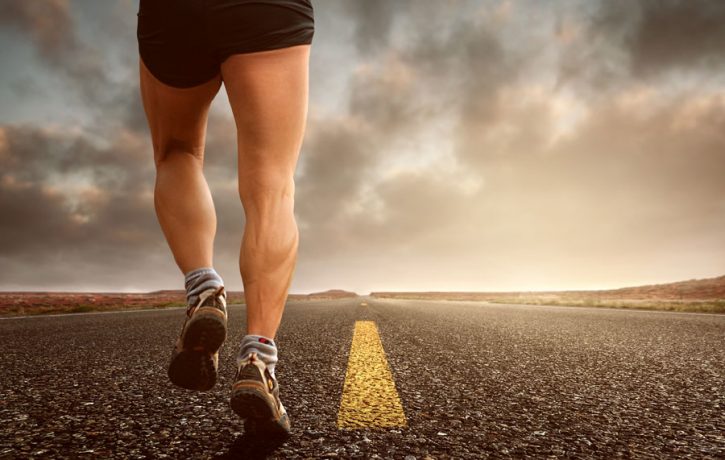The Biomechanics of Running – What Could Go Wrong?

Everybody is unique in their lives in everything they do, and the same applies to running. The style that an individual runs (running gait) can directly affect their speed, amount of effort needed, risk of injury and progression in the activity. With a biomechanical assessment a runner can find out exactly what’s needed to be worked on, and in doing so can improve their efficiency in running. The biggest benefit of addressing gait imbalances is prevention of long term injuries such as tendinopathies and joint damage.
Likely Scenarios
As mentioned, every runner is different, however there are trends in abnormalities in gait and types of injury that occur. Anterior knee pain, or patellofemoral pain is often associated by a low cadence. Cadence is the amount of strides taken per minute with the average runner aiming between 165-185. If the cadence is too low then that would mean bigger bounds and heavier impact on the knee joint, therefore knee pain from overuse.
Hip or Illiotibial band (IT band) pain can occur due to a lack of bend in the knee as the leg comes through to land. If the knee is hyperextended (quite common) that would send the impact to be absorbed at other joints such as the hip. With the extra shock, it can lead to glute tightness, hip flexor stiffness and ultimately IT band syndrome. In worse cases trochanteric bursitis can happen due to the ‘flicking’ of the IT band over the head of the femur, irritating the bursa. And all of this because of a straight knee!
Weakness in the gluteus medius in running can lead to lower back or more IT band issues also, and in worse cases sciatic pain and piriformis syndrome. When the therapist analyses your gait, one thing to watch will be your hip stability. If either side drops on impact it may signify an imbalance there, and there begins the rehabilitation needed to strengthen the glutes. This observation is also known as the Trendelenburg test.
Pronation of the foot as previously discussed in other blogs, is actually a normal position for your foot. The belief that your foot bowing inwards can cause injury has been around for decades with a genuine intent, however in modern research there’s limited evidence to back up the claim. In fact a study in Denmark involving over 900 beginner runners which was well undergone, outlined how injury percentages over one year (highly supinated feet (24.5%), supinated feet (17.9%), neutral feet (17.4%), pronated feet (13.1%), and highly pronated feet (33.3%)) were broadly spread across all different foot types. All runners wore the same brand of neutral trainer yet the prevalence of injury was shared amongst all runners. The key thing to remember is not to be roped into the pronation talk that is still very commonplace, and when it comes to footwear the only thing to consider (unless professionally advised otherwise) is comfort.
Now, to contradict myself somewhat, if you OVER-pronate and find yourself injured on a regular basis there may be something to address in this situation, but at the same time it could stem from another source. It really depends on the problem. I must emphasise again that everyone is different! There is no black and white in the therapeutic world unfortunately; what may work for one person may not work for another.
What to Expect
I can only describe a gait analysis the way I personally do it with my patients, but it can be completely different with other clinics. My approach involves going outside and finding a straight and flat pathway, and have the individual run about 30 meters and turn back to run towards and past me. For the first few minutes I give the patient time to find their stride, then I count cadence and record. The next step (with permission) I record in slow motion the runner from both sides, anterior and posterior. Once I feel I have enough information we will both sit back in the treatment room and watch/assess the footage. As I watch, I think out loud and explain what’s happening, and how we can correct it. In future sessions once enough personal development has been made, we can reassess the running gait and compare from one to the other, and see if any change has been made. A key piece of information for the patient to always remember is that when out running (if not incapacitated by the injury) to be aware of their gait and what we found. Often I will advise 2 minutes of awareness, and 2 minutes of normal running style. Eventually that can be gradually increased into ‘new style’ such as 3 minutes and 1 minute, until eventually it feels more normal to run the safer and more efficient way.
What’s My Homework?
Essentially your take-home advice will be tailored for you, between you and the therapist. Depending on the problem it may involve strength work, flexibility and stretching, cadence re-education, proprioception or just simply gait re-education. Whatever it be, make sure you stick to it word for word; often a patient will return and explain that time was a factor and they could do the easy ones from standing, but others from a prone position (for example) were more difficult to do routinely. Focusing on one exercise and not the others may cause more imbalances, just keep that in mind.
- What’s Your Weakness? - 7th February 2019
- Taping and Strapping Vlog – How does Kinesiology tape work? - 26th October 2018
- Are Regular Treatments Worth It? - 14th September 2018
